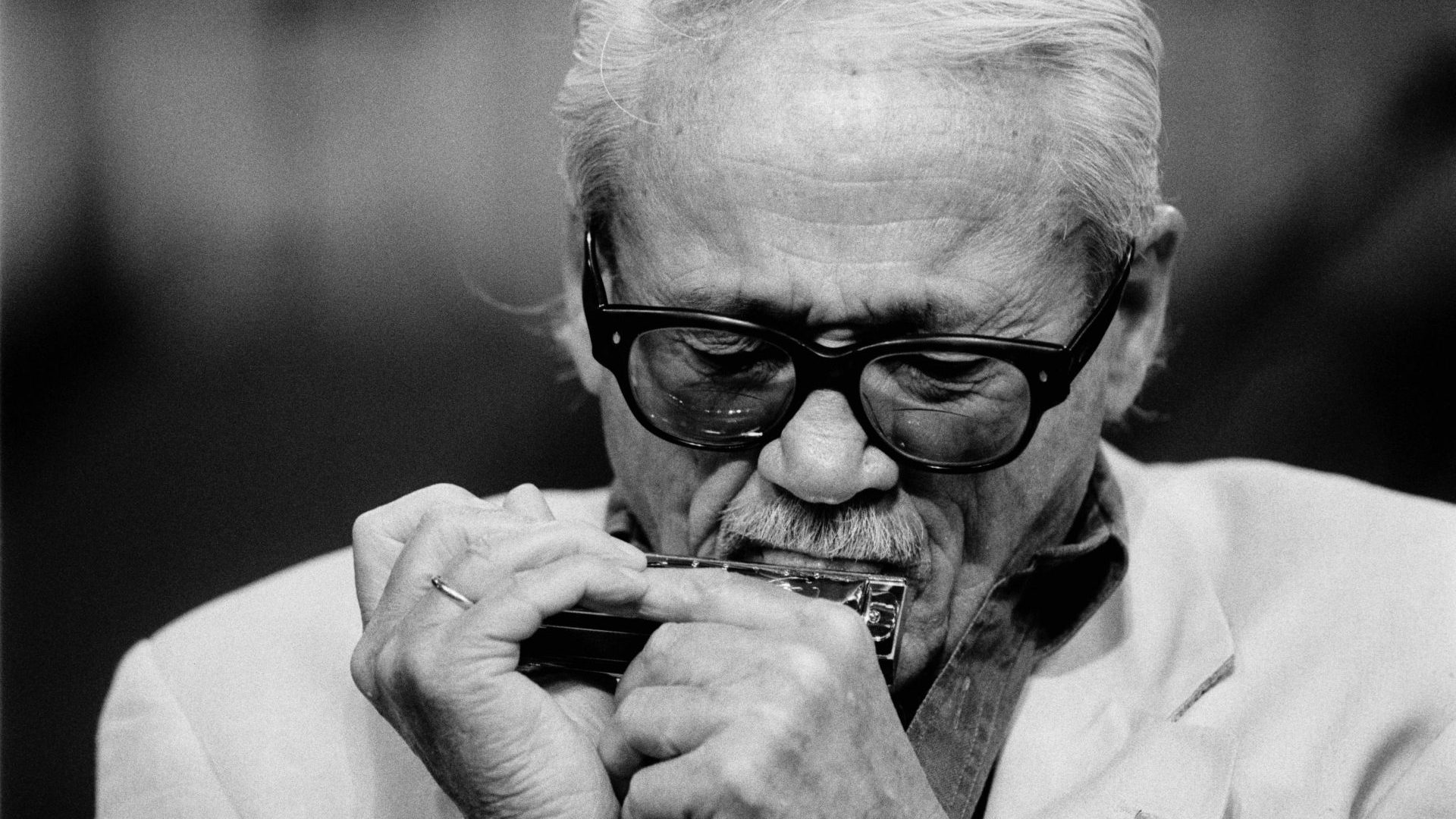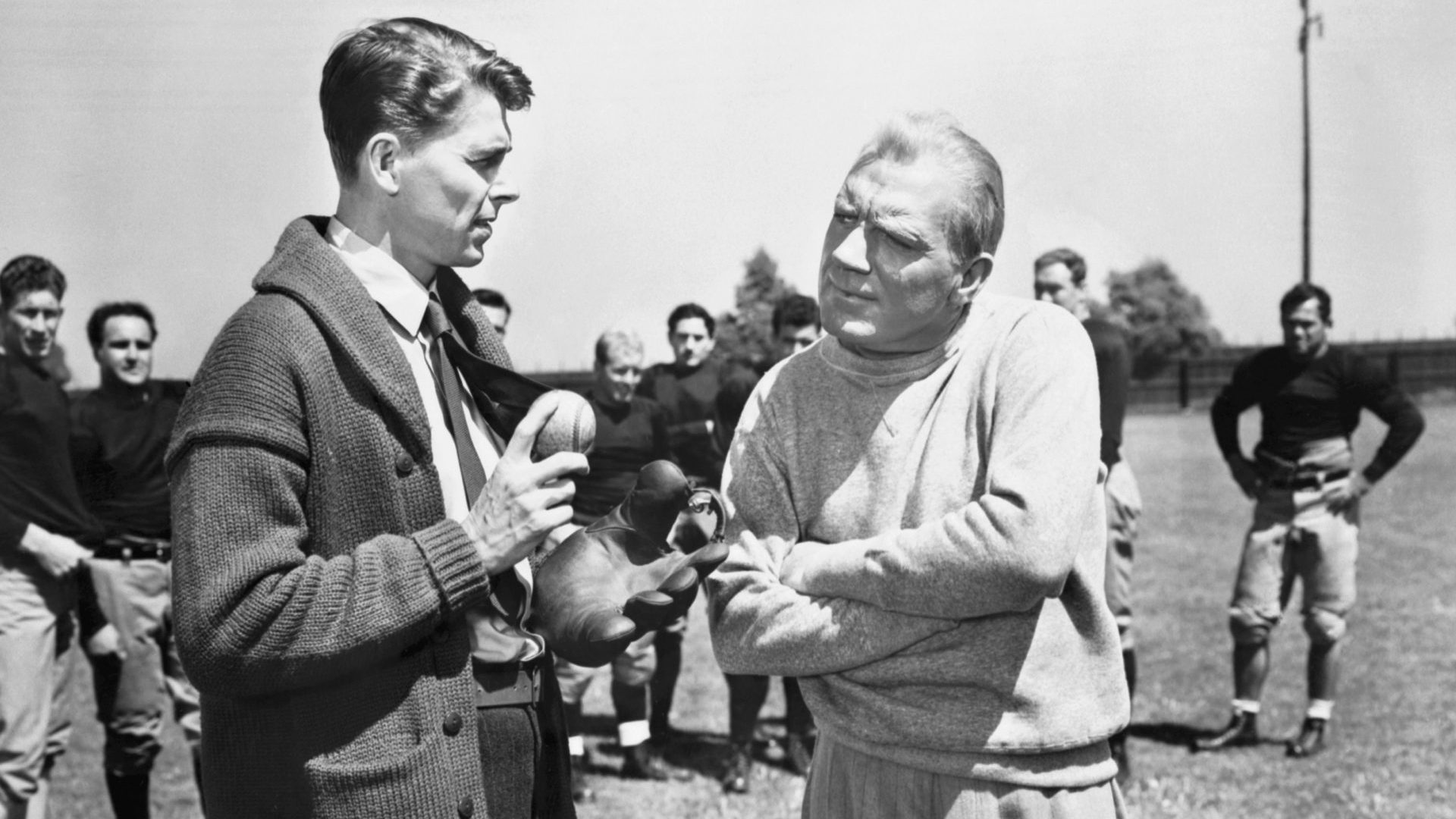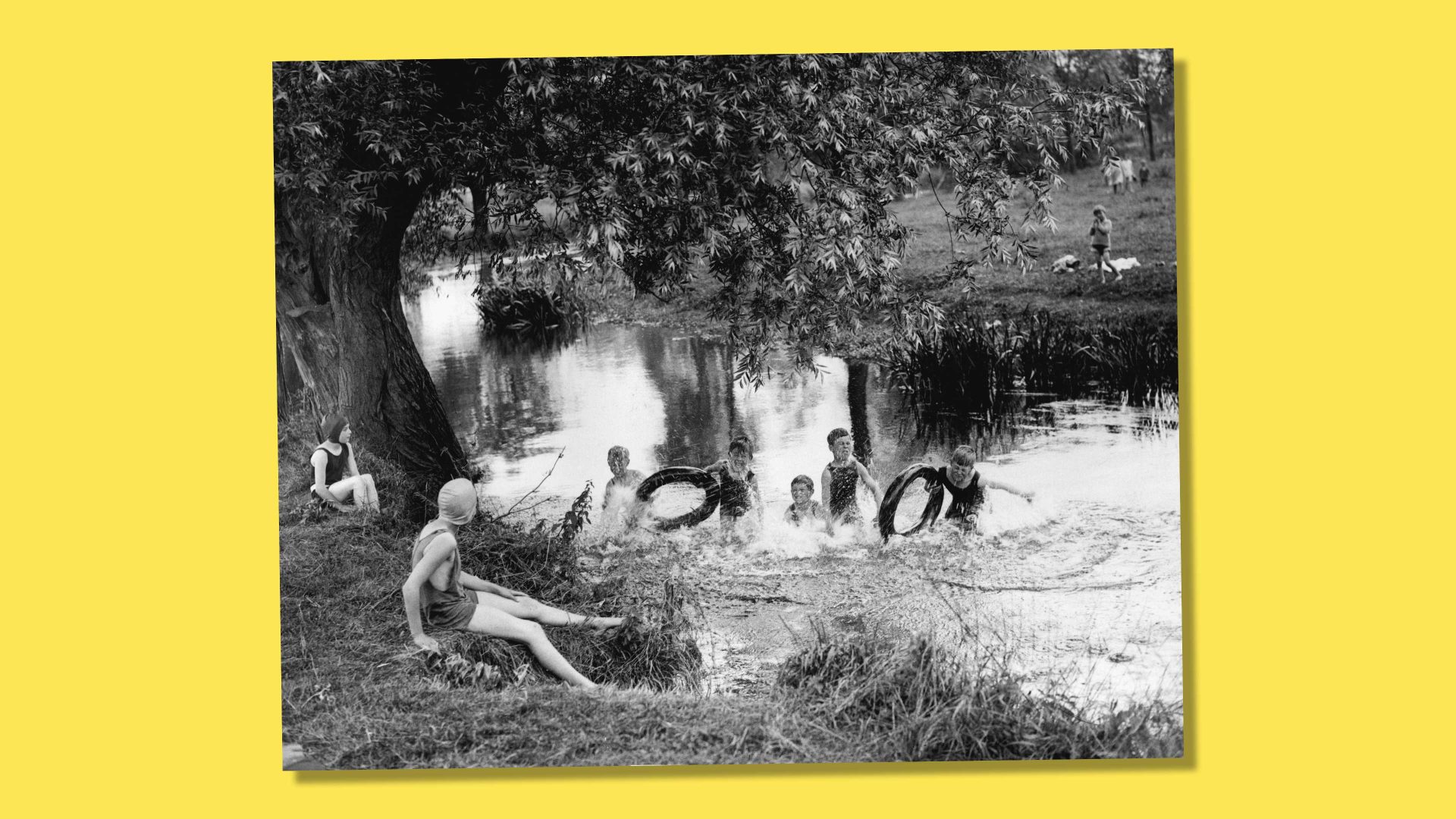“A paunchy, middle-aged, bespectacled Belgian dressed in baggy blue denim trousers and waistcoat is currently walking on stage at Ronnie Scott’s with nothing but a mouth organ,” wrote the bemused jazz correspondent for the London Evening Standard in January 1978.
“Now, the mouth organ is not an instrument with much of a place in jazz. But Toots Thielemans, backed by a racy rhythm trio, proceeds to show what instrumental jazz music has long been missing. It is an astonishing and original performance.”
Thielemans was already well into middle age that wintry London night but would be confounding critics and astounding audiences with his chromatic harmonica for the best part of four more decades. The antithesis of jazz cool in almost every way, this unlikely virtuoso possessed unique talents that graced collaborations with artists from Edith Piaf to Billy Joel via Miles Davis, Charlie Parker, Duke Ellington, Quincy Jones and Ella Fitzgerald.
Yet he was far more than a mere eccentric pioneer of an unlikely instrument. Thielemans was also an outstanding guitarist whose own composition Bluesette, which he performed on guitar accompanied by his own whistling, became a jazz standard.
One could even make a case for Thielemans the guitarist being one of the most influential figures in the history of popular music. When the Beatles were learning their trade in Hamburg in 1960, John Lennon saw a picture of Thielemans with his Rickenbacker on the cover of the George Shearing Quintet’s Shearing on Stage and went straight out and bought the same guitar, the model with which he became most closely associated.
“If a Rickenbacker was good enough for Toots Thielemans,” Lennon recalled years later, “it was good enough for me.”
Even if the name is unfamiliar, many will know Thielemans’ playing thanks to wide-ranging session work on classic soundtracks like Midnight Cowboy and Jean de Florette – not to mention the theme song to Sesame Street. “The phone rings and I say ‘OK’,” he would shrug when asked about his genre-spanning status as a harmonica for hire.
Thielemans the composer also met with immense success, with his simple tune Ladyfingers proving to be the most lucrative piece of work he ever produced. “I wrote a two-note song on the guitar and the publisher said, ‘hey man, we can sell that,’” he said in 1994. “The song reached Herb Alpert.”
Alpert included Ladyfingers on his 1965 Tijuana Brass album Whipped Cream and Other Delights, whose multimillion sales earned Thielemans enough money to buy not just an apartment in Manhattan but also a house on Long Island.
Few things in music sound more like the punchline to a joke than a millionaire mouth organist, but Jean-Baptiste Thielemans was able to forge a brilliantly idiosyncratic path right from his earliest years in the Brussels working-class district of Marolles.
“My parents had a sidewalk cafe,” he recalled, “and every Sunday there was an accordion player. Apparently, I went through the motions of imitating him, squeezing a shoebox. One of the regulars said to my father, I think you should get your son an accordion, that’s what he’s trying to do with that shoebox. So they got me a little diatonic accordion and I started to play the national anthem, things like that.”
Thielemans was in his teens when he bought his first harmonica, inspired by a film in which a death-row prisoner had played one as he waited to be taken to the electric chair. Choosing the chromatic instrument instead of the more common and easier-to-master diatonic harmonica favoured by blues players, not to mention becoming a superb guitar player having heard Django Reinhardt for the first time, after the second world war Thielemans began making his living playing the circuit of American officers’ clubs that had sprung up across Brussels since the liberation.
It was there, thanks to the gramophone records being sent across the Atlantic, that he was also introduced to the new bebop sounds of Charlie Parker and Dizzy Gillespie that would not only change his life but lead to his adoption of the nickname “Toots”, after jazz players Toots Mondello and Toots Camarata.
“Toots,” he mused, “sounds hipper than Jean-Baptiste.”
In 1948 the 26-year-old travelled to Miami to visit relatives and met jazz photographer Bill Gottlieb at a club session. Gottlieb introduced him to the New York jazz scene, where he sat in on sessions long into the night and took what he learned back to Belgium. There he began making acetate recordings in his Brussels garage, one of which reached Benny Goodman, who immediately invited Thielemans to join his 1949 European tour.
Thielemans’ debut with the Goodman band was at the London Palladium, the sense he was emerging at a cultural tipping point confirmed by the cutting-edge jazz outfit being supported that night by sand-dancing music hall veterans Wilson, Keppel and Betty.
A move to New York in 1952 brought gigs with Charlie Parker and the regular seat with the George Shearing Quintet that prompted John Lennon’s trip to the music shop, but by the 1960s Thielemans was leading his own jazz combo, touring the world and releasing a string of successful albums. In the following decades, he would work with a range of collaborators – Milton Nascimento, Johnny Mathis, Stéphane Grappelli, Paul Simon, Gilberto Gil, Dinah Washington – and maintain an exhausting touring schedule of more than 250 shows a year well into his 80s.
Longevity confirmed Thielemans as more than a novelty act. The harmonica was never the most fashionable instrument and its brass reeds made dynamics and expression a considerable challenge, but Toots Thielemans made it sing.
He would never win over everybody, often quoting a reviewer who said “Toots Thielemans would be one of my favourite musicians if he didn’t play the damn harmonica”, but the roster of artists with whom he performed across genres and decades confirmed a unique talent and sensibility.
“It’s such a freak of an instrument,” Thielemans chuckled during an interview in 1992. “This is not a good instrument but I blow my brains out
on it.”
The sceptical correspondent from the Evening Standard was certainly converted that night at Ronnie Scott’s in 1978.
“It is an astonishing and original performance,” he wrote. “For wonder and surprise I do not remember anything like it. It could be ridiculous, instead it is a very impressive performance.”
For Thielemans, coaxing magic from his unwieldy sandwich of reed and tin was a search for something, a sound, a tone, an expression that inhabited “that little space between a smile and a tear”.




